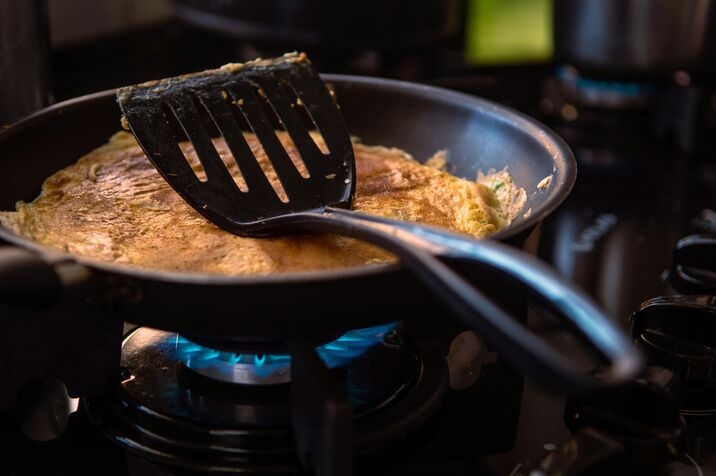Health concerns and chronic illnesses in Indian have been at a consistant rise and maybe it is time to straighten your back and start thinking about how and why is it that the land of Yoga and home cooking has taken a u-turn when it comes to leading a healthier lifestyle. Is it simply a trend or lack of regulations? Roughly 5.8 million Indians die because of diabetes, cancer, stroke, heart and lung diseases each year. That is approximately every 1 out of 4 Indians. While there are a lot of factors to be considered, today we focus on our homes and the utensils we have been using for the past 2 decades.
Non-stick pans, a staple in many Indian kitchens for their convenience, may pose significant health and environmental risks. The coating that makes these pans non-stick is Teflon, scientifically known as PTFE (Poly Tetra Fluoro Ethylene). While it simplifies cooking and cleaning, the hidden dangers associated with this chemical are concerning.
Health Hazards
PTFE’s main advantage, its non-stick property, comes with a significant drawback: it can release toxic fumes when heated above 260 degrees Celsius. These fumes can make food toxic in just 1.5 to 2 minutes of cooking. This makes almost anything cooked in non-stick pans extremely dangerous to health.
Environmental Impact
Another grave concern is PTFE’s durability. This chemical does not break down in the environment or in our bodies, leading to long-term contamination. Its persistence means it stays indefinitely, accumulating and causing potential harm over time to both our internal organs and our mother earth.
India Lags Behind in Regulations
Non-stick pans also contain PFOA (Perfluorooctanoic Acid), a chemical linked to cancer. The health risks associated with PFOA are liver tumors, breast cancer, reduced fertility, thyroid and kidney disorder. Due to its dangerous effects, Europe has banned PFOA, and the United States has highly regulated its use. However in the revised Dietary Guidelines for Indians (DGIs), the Indian Council for Medical Research (ICMR) and the National Institute of Nutrition (NIN) have advised against non-stick cookware due to health risks from PFOA, PFOS in Teflon coatings, but there are no stringent regulations on PFOA, leading to its continued presence in many products available in the market.
Misleading Labels
Many brands in the Indian market claim their products are PFOA-free, giving a false sense of security. While they may not contain PFOA, they still use PTFE, which continues to pose health risks. Consumers might be unaware that their “safe” non-stick cookware still has dangerous chemicals.
Safer Alternatives
Given the risks associated with non-stick pans, it’s worth considering alternative cookware options that are both safe and effective. Cast iron, clay, copper, and stainless steel are excellent alternatives. Each has its unique benefits:
Cast Iron: Naturally non-stick when seasoned properly, adds iron to your food.
Clay: Enhances flavor and provides even cooking.
Copper: Excellent heat conduction, stylish appearance.
Stainless Steel: Durable, non-reactive, and versatile for all cooking needs.
The convenience of non-stick pans comes at a high cost to health and the environment. While regulations in some countries have addressed the dangers of chemicals like PFOA, others, including India, lag behind. Consumers must be aware of the risks and consider safer alternatives such as cast iron, clay, copper, and stainless steel. Making informed choices in the kitchen can lead to better health outcomes and a cleaner environment.
Non-stick pans might seem like a quick fix for easy cooking and cleaning, but the hidden dangers of PTFE and the PFOA outweigh the benefits. With many safer and effective alternatives available, it’s wise to reconsider the cookware we use daily. By choosing healthier options, we can protect ourselves, our families, and the environment from the long-term consequences of harmful chemicals.


